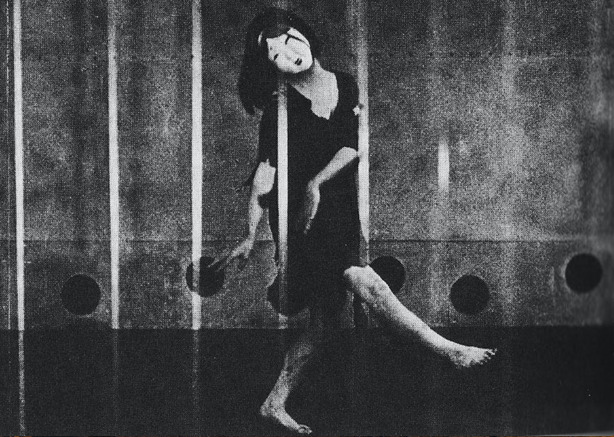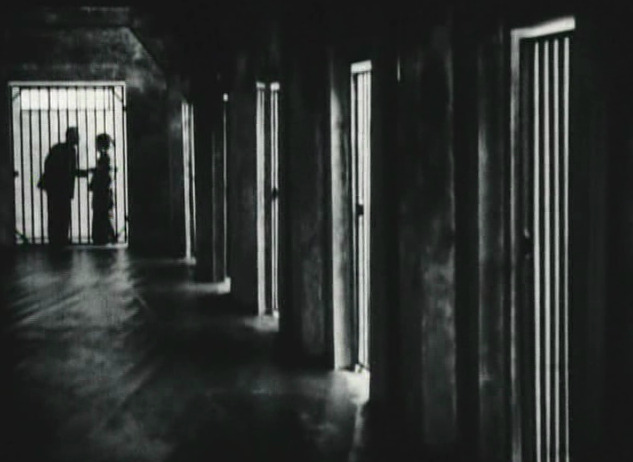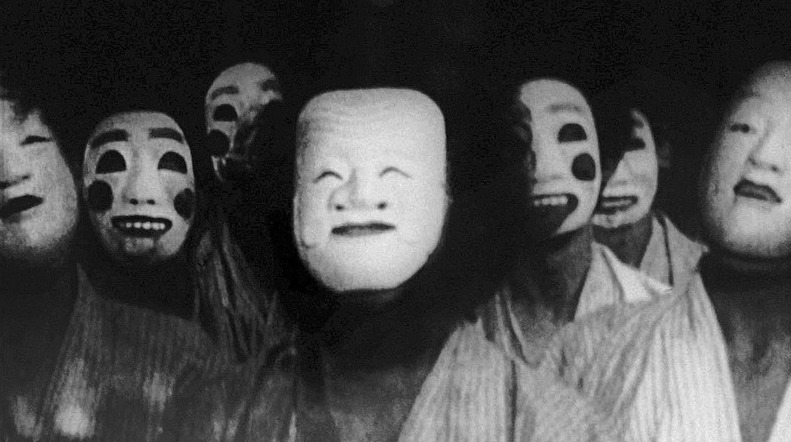
The digital reproduction of the 35mm 1926 Japanese silent-experimental-horror film directed by Teinosuke Kinugasa, is preserved by the George Eastman Museum. A Page of Madness is part of the Taisho Roman: Fever Dreams of the Great Rectitude at Japan Society and will be screened on December 15th at 6pm.
The six-film series running from December 9th until the 16th will showcase rarely-seen screenings of Japanese films from the Twenties until the Eighties, that focused on nightmarish depictions of the Taisho era (1912-1926).
A Page of Madness (Kurutta ippeiji) is indubitably haunting for the theme it unveils, but irresistibly beguiling for the pioneering experimental visuals. The film is the result of an avant-garde group of artists in Japan known as the Shinkankakuha (School of New Perceptions), who tried to overcome naturalistic representation. The pre-war Japanese literary group led by Riichi Yokomitsu and Yasunari Kawabata explored new impressions in a specific manner, that Yokomitsu described as a “direct, intuitive sensation of a subjectivity that peels away the naturalised exterior aspects and leaps into the thing itself.” Philosophers would definitely classify this approach in the field of phenomenology.
Indeed, Kinugasa’s motion picture delves deep into the human psyche, since the story takes place in an asylum in the countryside and portrays the various patients afflicted by mental illness. A former sailor has been hired as janitor (Masao Inoue) of the institution, where his dancer-wife (Yoshie Nakagawa) is hospitalised. Their daughter (Ayako Iijima) arrives at the asylum and announces that she is soon to marry a fine man (Hiroshi Nemoto).
But if his family were to learn of the mother’s illness, the marriage might be called off. As the janitor tries to protect his wife and the future of his daughter he gets into fight with some patients, and drifts into a dimension where dreams and reality merge.

When A Page of Madness was first screened in Tokyo, in the late Twenties, the shows had a musical accompaniment and live narration by benshi storytellers. Unlike Western silent films, this picture did not have title cards to explain the dialogues of characters, precisely because the figure of the benshi would fill that void. Despite this different approach, Kinugasa’s film was considered one of the few Japanese films equal to foreign ones and actually displays some influences of German Expressionism.
The picture was destroyed in a fire at the Shochiku Shimogamo Studio in 1950. For decades it was considered lost forever, until a surviving print — missing nearly a third — was rediscovered by Kinugasa himself, in a rice barrel kept in his storehouse in 1971. Two years later, the film was presented at the Rotterdam International Film Festival and the Berlin International Film Festival. After that is travelled around the festival circuit gaining praise worldwide.
The script of A Page of Madness is a collaboration between Kinugasa, Banko Sawada, Minoru Inuzuka and Yasunari Kawabata— the latter won the Nobel Prize for Literature. Eiji Tsuburaya is credited as cameraman and assistant cinematographer and with the film director he achieved a spectacular result for the era, by bringing to the screen the states of the subconscious.
Dreams, fantasies, nightmares, obsessions are depicted through blurred or distorted images. All the film techniques are utilised adeptly, from double exposures, to oblique and reversed shots, along with optical effects obtained with the use of distorting lenses. The film is also drenched with Teinosuke Kinugasa’s experience as a shinpa actor — the movement that at the end of the 19th century branched out of kabuki. The theatrical element makes its way through the story, when the characters start dancing covering their faces with noh theatre masks.

The visuals perfectly match the narrative tension.
To quote Professor Vlada Petrić — eminent theoretician, historian and aesthetician of cinema —“Kinugasa made the first full feature film whose plot development is radically subverted, while its cinematic structure includes virtually every film device known at the time.”
If apperception concerns the way the mind elaborates new experience in relation to the past, Teinosuke Kinugasa embarks upon a phantasmagorical journey through this perceptive process. Thusly, A Page of Madness is a symphony of images that are erratically liberated through the cinematic language, through a whirlwind of crossfades that mirror the meandering flow of the mind.
Final Grade: A

